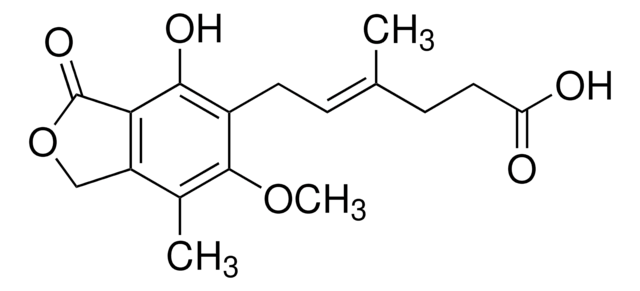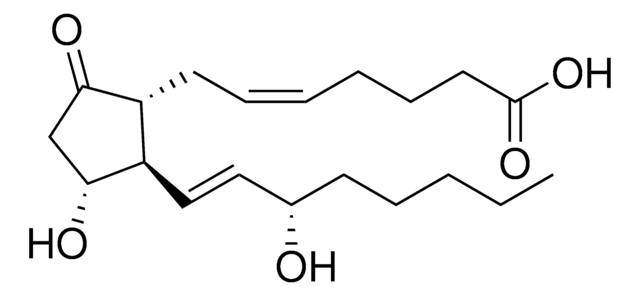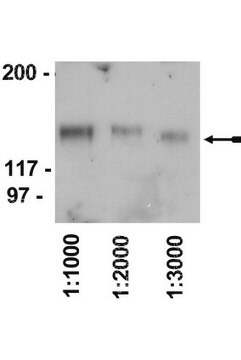TR-1001
GPT Selection Reagent, 500X Mycophenolic Acid; 100X Aminopterin
The Mycophenolic Acid is an antibiotic useful in research for the selection of animal cells that express the E. coli.
Synonym(s):
MPA & Aminopterin solution
About This Item
Recommended Products
Quality Level
form
liquid
manufacturer/tradename
Specialty Media
input
sample type: mouse embryonic stem cell(s)
shipped in
dry ice
General description
Cells transfected with the E. coli GPT gene can be selected for growth in medium containing GPT Selection Reagent.
Each Kit Contains:
• 500X Mycophenolic Acid containing ETOH (12.5mg/mL) 2 x 1mL vials
• 1 bottle (10mL) of 100X Aminopterin solution which consists of:
- xanthine 25 mg/mL
- hypoxanthine: 1.5 mg/mL
- aminopterin: 0.2mg/mL
- thymidine: 1 mg/mL
- in 0.08M NaOH
Application
2. Transfect the culture with 10-20 μg of the plasmid-EcoGPT DNA.
3. After 3 days at 37°C in DMEM containing 5% fetal calf serum, trypsinize the cell monolayers and disperse 5 x 105 cells on fresh 100 mm culture plates in DMEM containing 10% dialyzed fetal calf serum supplemented with the MPA and Aminopterin solutions. This will give a final solution of approximately: 250 μg/mL xanthine, 15 μg/mL hypoxantine, 10 μg/mL thymidine, 2 μg/mL aminopterin, and 25 μg/mL mycophenolic acid. Dialyzed serum is used to speed the selection process. Selection will be slower with undialyzed serum.
4. Twenty-four hours later, replace the medium with fresh medium containing the same supplements, and fluid change.
5. Repeat every 3 days. Colonies are visible in 7-10 days, typically.
Note: Other media bases can also be used such as Ham′s F12. Much depends upon the cell type being used.
Storage and Stability
Disclaimer
signalword
Danger
Hazard Classifications
Aquatic Chronic 2 - Muta. 2 - Repr. 1B - STOT RE 2 Oral
target_organs
Immune system
Storage Class
6.1D - Non-combustible, acute toxic Cat.3 / toxic hazardous materials or hazardous materials causing chronic effects
wgk_germany
WGK 3
flash_point_f
Not applicable
flash_point_c
Not applicable
Certificates of Analysis (COA)
Search for Certificates of Analysis (COA) by entering the products Lot/Batch Number. Lot and Batch Numbers can be found on a product’s label following the words ‘Lot’ or ‘Batch’.
Already Own This Product?
Find documentation for the products that you have recently purchased in the Document Library.
Customers Also Viewed
Our team of scientists has experience in all areas of research including Life Science, Material Science, Chemical Synthesis, Chromatography, Analytical and many others.
Contact Technical Service








